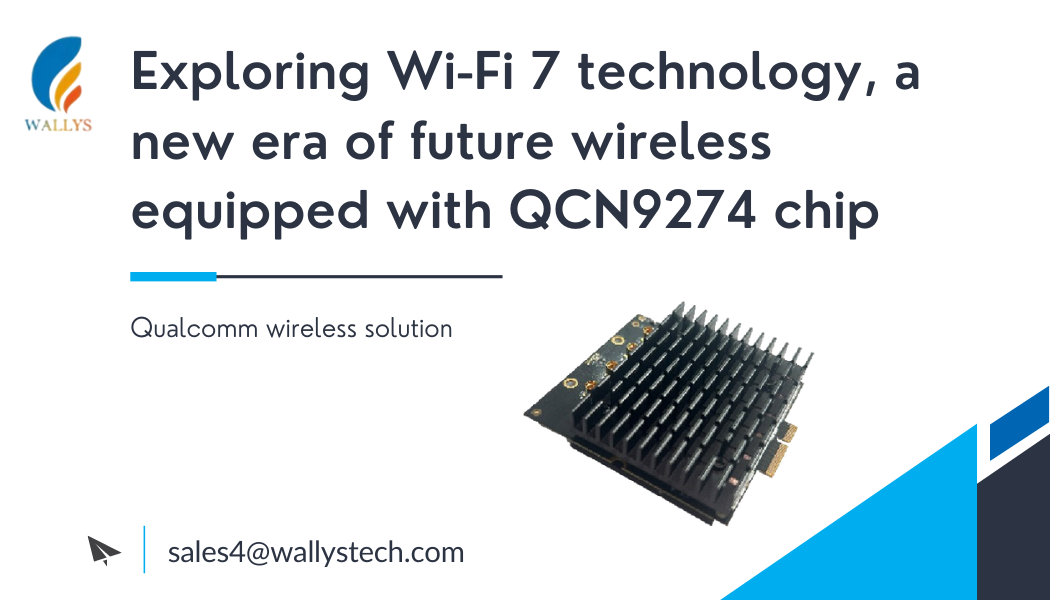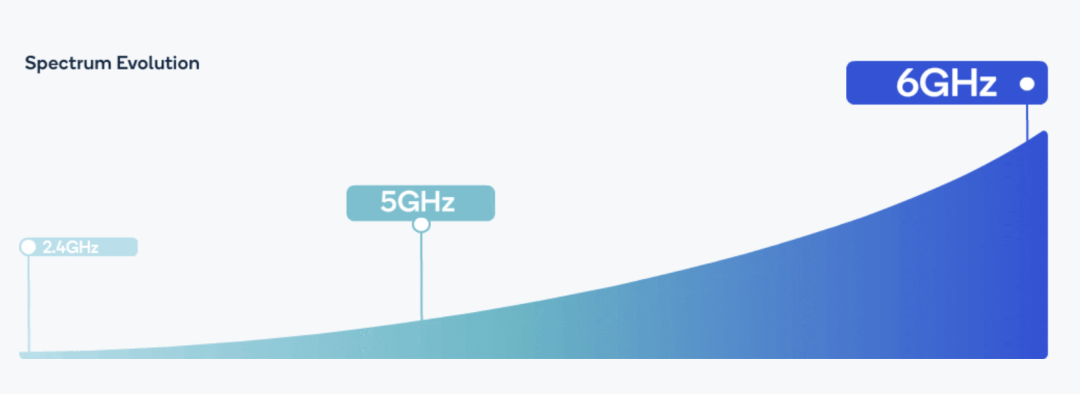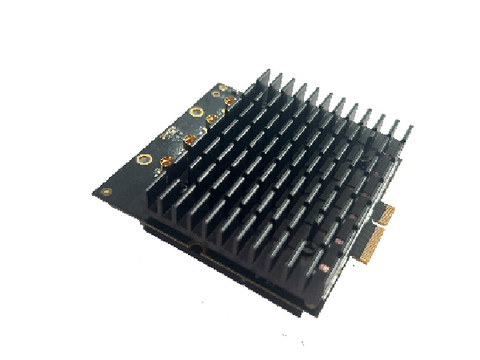WiFi 7/QCN9274: Connecting the super network of the future

As technology continues to develop, we are witnessing the continued evolution of wireless network standards. In the current context of the increasing popularity of Wi-Fi 6 and Wi-Fi 6E, WiFi 7 has begun to emerge as the next generation WiFi standard. Its full name is IEEE 802.11be Extremely High Throughput (EHT). By comparing the previous generation standards, we can clearly see that WiFi 7 will be a huge upgrade from Wi-Fi 6 and Wi-Fi 6E.
Three major features of WiFi 7:
Higher speed: A single user device can reach a speed of up to 30Gbps, and the speed can also reach 20Gbps in a multi-user environment, providing users with a faster and more efficient connection experience.
Lower latency: WiFi 7 can reduce air transmission latency to less than 3ms, providing a smoother user experience for application scenarios with strong real-time requirements, such as AR/VR, autonomous driving and other fields.
Stronger network capacity: Supports more frequency bands and wider spectrum (320MHz), and can connect more devices, making it an ideal choice for complex WiFi environments, such as large venues, high-density users, etc.
The main technical changes brought by the Wi-Fi 7
1.Introducing 6GHz frequency band, supporting maximum bandwidth of 320MHz
The bandwidth of Wi-Fi is like the width of a road. The wider the bandwidth and the wider the road, the faster the information that can be transmitted.
The Wi-Fi 6 currently in use supports both 2.4 GHz and 5 GHz frequency bands. 2.4 GHz has been largely shared in the early days of Wi-Fi and other wireless technologies like Bluetooth, and the band has become very congested; the 5 GHz band offers more bandwidth than 2.4 GHz, which translates into faster speeds and greater capacity, but the band also has congestion issues.
In order to achieve the goal of maximum throughput improvement, Wi-Fi 7 will continue to introduce the 6GHz frequency band and add new bandwidth modes, including continuous 240MHz, non-continuous 160+80MHz, continuous 320 MHz and non-continuous 160+160MHz, thus providing twice the For Wi-Fi CERTIFIED 6 throughput.

2.Preamble Puncturing
When users have occupied part of the channel bandwidth, such as 20MHz or 40MHz, the AP is usually prevented from using this frequency band, causing a certain degree of waste. In response to this situation, Wi-Fi 7 adopts an innovative solution called "preamble puncturing", which allows the network to be cut and avoid using parts of the spectrum containing interfering signals while ensuring that continuous channels are available. Although the total bandwidth is reduced by the number of perforations, it still provides a wider channel than would otherwise be possible.

3.Support Multi-RU mechanism
In Wi-Fi 6, each user can only send or receive frames on the specific RU to which it is assigned, greatly limiting the flexibility of spectrum resource scheduling. To solve this problem and further improve spectral efficiency, Wi-Fi 7 defines a mechanism that allows multiple RUs to be allocated to a single user.
Of course, in order to balance the implementation complexity and spectrum utilization, the protocol places certain restrictions on the combination of RUs, that is: small-sized RUs (RUs smaller than 242-Tone) can only be merged with small-sized RUs, and large-sized RUs (RUs greater than or equal to 242-Tone) can only be combined with large-sized RUs, and small-sized RUs and large-sized RUs are not allowed to be mixed.
4.Introducing Multi-Link mechanism
Before Wi-Fi 7, users could only use one of the frequency bands that best suited their needs, but based on the multi-link function, users could connect to the AP through multiple channels and use this to avoid congestion. For example, if there is traffic on one of the channels, the device can use the other channel, resulting in lower latency. At the same time, depending on availability in different regions, multi-link can use either two channels of the 5GHz frequency band, or a two-channel combination of the 5GHz and 6GHz frequency bands.

In a multi-link solution, terminals such as routers use the first available frequency band for each transmission, and can select any frequency band for the next data transmission after the previous transmission is completed. In this way, congestion can be avoided and latency reduced.
WIFI 7 product---DR9274-5G6G

Features
Qualcomm Atheros QCN9274 for Industrial Grade;
Maxim Tx power 22dBm per chain;
2x2 5G & 2x2 6G MU-MIMO, up to 8,647Mbps physical data rate;
Support up to 4096-QAM;
M.2 connector;
PCI Express 3 .0 Interface
Applications
Security Surveillance
Commercial radio coverage
Hotel Wireless application
Forest fire protection engineering
Country coverage
Some special scene application
Attach:sales4@wallystech.com








评论